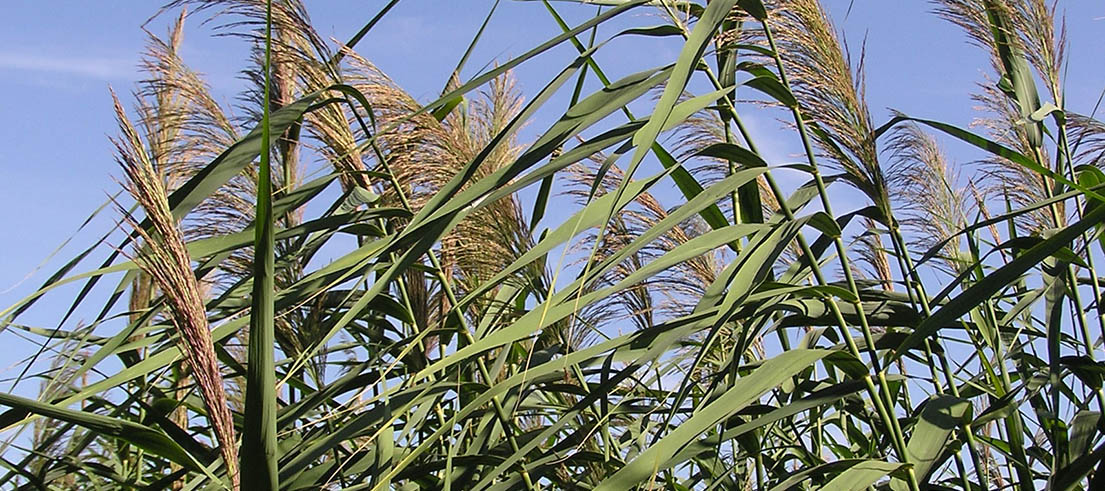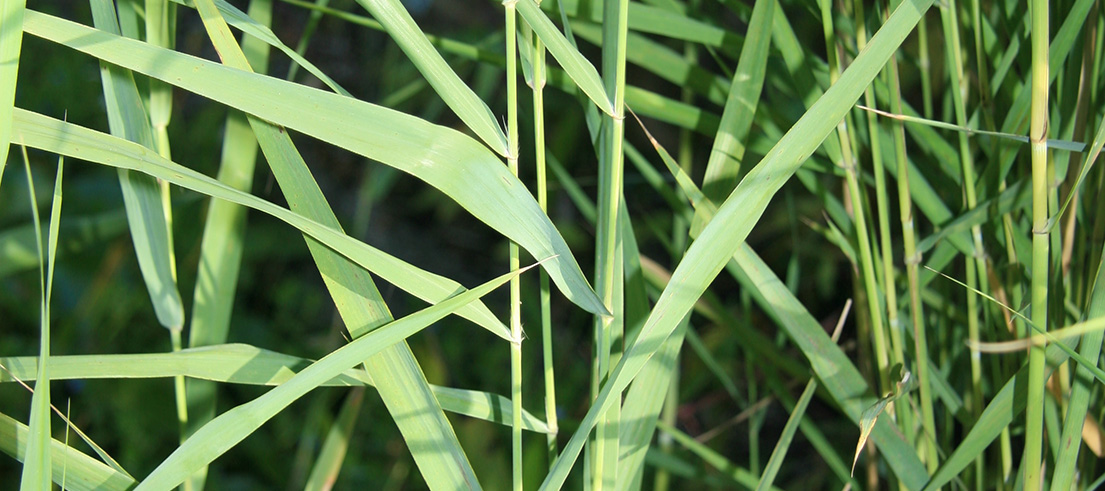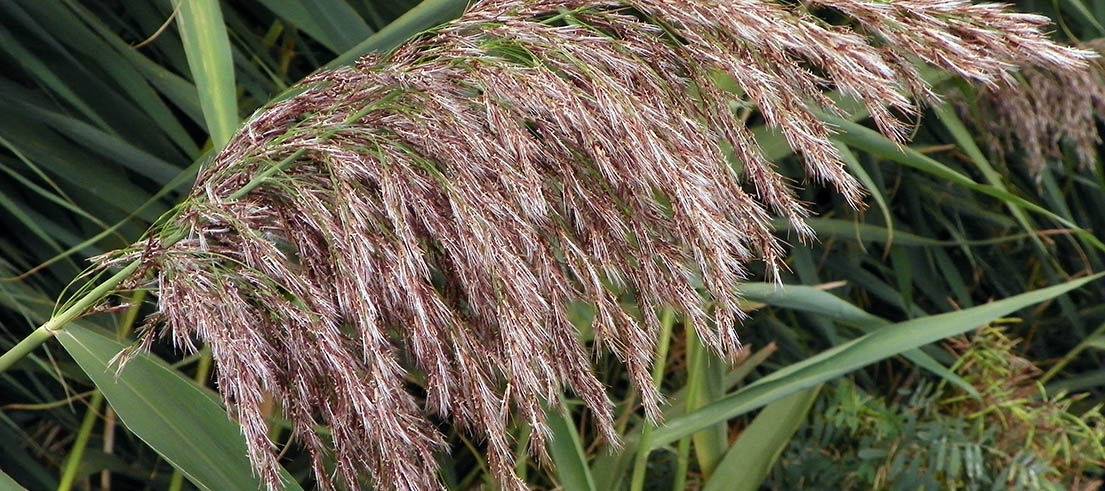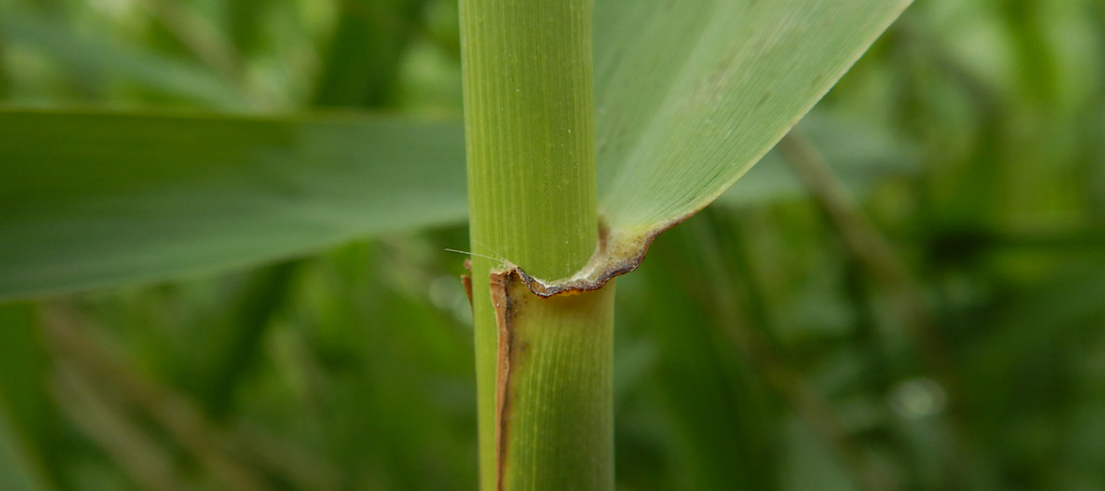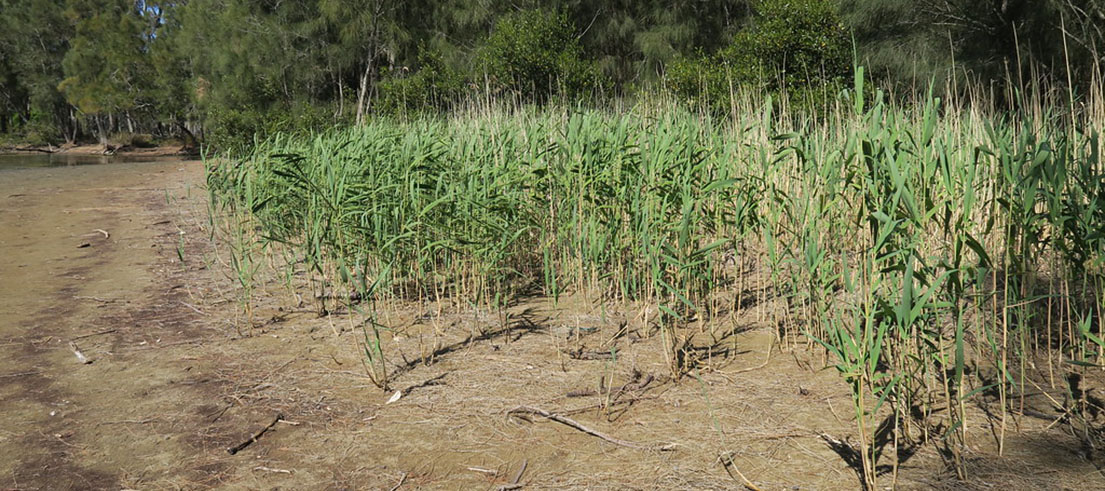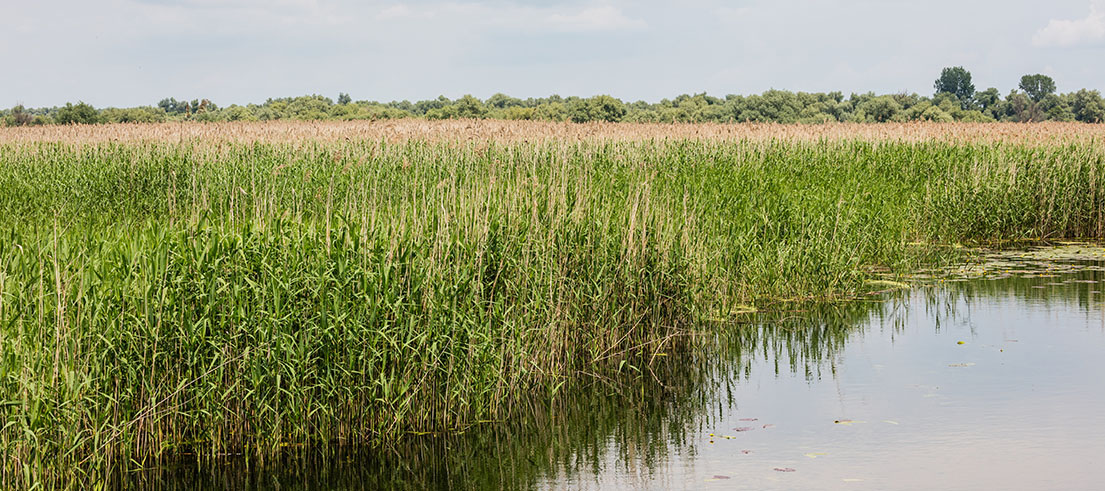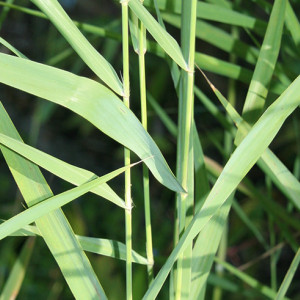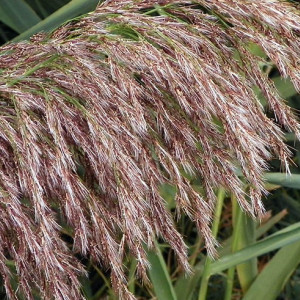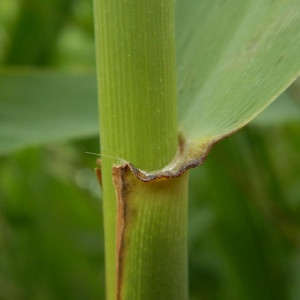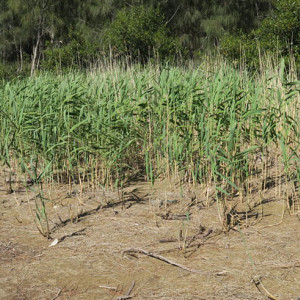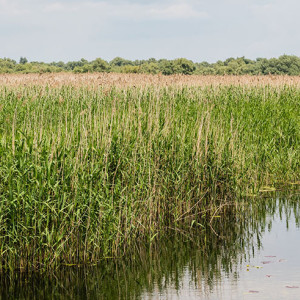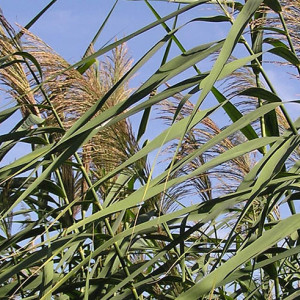A tufted grass less than 4m tall with brown-purple, drooping flowers. Phragmites clogs waterways and displaces native vegetation.
Description
- An erect, tufted, rhizomatous perennial grass, less than 4m tall.
- Stems are rigid and bamboo-like, leaves are long, wide, flat, less than 60cm long, alternate, rigid and tapering to a point.
- Flowers are brown-purple, feathery and drooping, and less than 50cm long.
- Seeds are covered in silky hairs, dispersed by wind and water.
- Vegetative spread from rhizomes and stem fragments.
- Human-mediated dispersal through deliberate plantings and movement of contaminated soil and machinery.
- Habitats include freshwater and brackish waterbody margins, coastal areas, and wetlands.
What you need to know
Forms dense infestations, displacing native vegetation. Clogs waterways and impedes recreational activities.
Management approach
This is a declared pest managed under the Canterbury Regional Management Plan 2018 – 2038 (PDF file, 10.6MB) within the eradication programme.
Eradication
Pests in the eradication programme are present in low numbers or have limited distribution within Waitaha/Canterbury and eradication is feasible.
The community should make us aware of any phragmites plants in Waitaha/Canterbury. We will work with affected landowners to undertake control of phragmites.
Phragmites is in the National Interest Pest Responses programme (NIPR) administered by MPI. See the MPI website for more information on NIPR.
Rules
Any species declared a pest cannot be sold or be in a place where plants are being sold. Pest plants cannot be propagated, bred, multiplied, communicated, released, caused to be released, or otherwise spread.
Control
Do not attempt to undertake control of phragmites yourself. Report any sightings to us.

